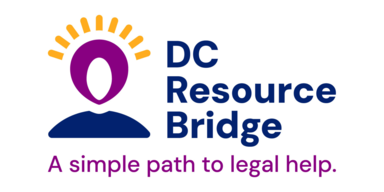
Last week marked the beginning of this year’s Domestic Violence Awareness Month, which has been observed every October for over thirty years. Legal Aid is proud to stand by domestic violence survivors and bring attention to this very important issue.
Legal Aid’s Domestic Violence/Family Law Unit represents domestic violence and sexual assault survivors in civil protection order cases and various family law matters. However, in order to get a civil protection order here in DC, a domestic violence survivor must show that their abuser committed a crime – usually an assault, a threat to do bodily harm, or a sexual assault.
Because of that, we often talk about the physical violence that our clients experience. We focus on incidents where a client is slapped, punched, or held at gunpoint. But this month, we want to raise awareness that domestic violence goes far beyond these very violent crimes. Many people experience horrific abuse without ever having a hand laid on them. Remarkably, nearly 50% of women and men will experience psychological aggression from an intimate partner in their lifetime.
The psychological aggression and emotional abuse that so many survivors experience includes tactics like name-calling, withholding affection, tracking movements, and gaslighting. This is all designed to lower self-esteem, increase dependency, control behavior, and coerce victims to stay with them. Emotional abusers may be overly critical of their victims, shaming their sexual histories until they feel insecure and undeserving. They may require constant contact, going as far as to require their victims to keep the bathroom door open. An abuser may try to isolate his victim from people and things she loves by belittling activities she enjoys and making her feel guilty for spending time away from the relationship. In the popular podcast Dirty John, for example, the titular John tries to turn his victim away from her children, forcing her to rely even more on him.
These behaviors fall under the umbrella of coercive control. Developed by Professor Evan Stark and defined as a “pattern of coercive and controlling behaviors that cause a range of harms,” the idea of coercive control has gained some traction in the law. In the United States, Alaska and New Jersey have included the crime of criminal coercion as a basis for obtaining a protection order. In 2015, the United Kingdom recognized coercive control as a crime.
Our clients often report that these patterns of control occur in a cycle along with physical abuse. Long after bruises fade, abusers continue their emotional abuse and coercive control, and survivors face long-lasting psychological effects. We hope that by raising awareness on this issue, people can start to spot the signs, exit abusive relationships before they turn physically violent, and access resources to get to safety.
Anyone trying to leave an abusive relationship can seek help at the District’s Domestic Violence Intake Centers (DVICs), located at the D.C. Superior Court and United Medical Center. At the DVICs, survivors can access advocates, counselors, and Legal Aid attorneys, who are all available to discuss options and help with safety planning.
Those interested in helping to spread awareness for Domestic Violence Awareness Month can check out the DC Coalition Against Domestic Violence’s Calendar of Events, and join Legal Aid in wearing purple on October 24 for Purple Thursday.
Get Help 24/7 from the National Sexual Violence Hotline at 1-800-656-4673**




